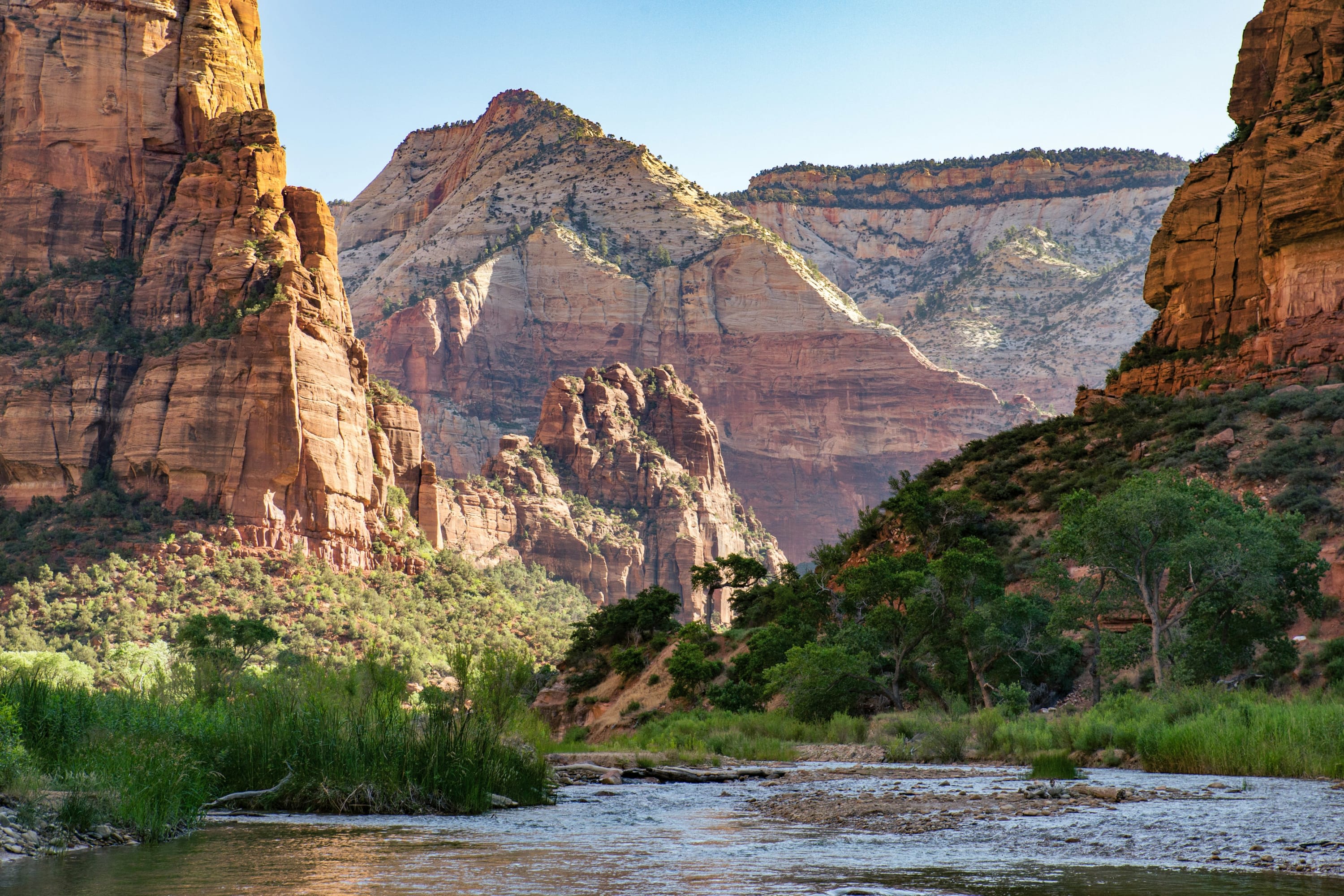
Enjoy a breath of fresh outdoor air in between Las Vegas’ neon lights, slot machines and bass-filled pool parties and dance floors. There are 10 national parks near Las Vegas — including national monuments and preserves — within five hours of the city, and many are much closer. We cover them all with the input of Fora travel experts.
(P.S. If you’re looking for a more general lineup of things to do around Las Vegas, check out this article.)
Red Rock Canyon National Conservation Area (15 miles, 25 minutes from the Las Vegas Strip)

Red Rock Canyon boasts impressive sandstone formations and desert landscapes just 20–25 scenic minutes west of the Las Vegas Strip. The area is rich in wildlife and native plant species, and there are hiking trails of varying difficulties to stretch your legs. Sunrise and sunset are especially compelling times to visit, bringing out the canyon’s most vibrant colors. Notably, the distance is short enough that you can easily make an early morning (to escape the heat) out of visiting the canyon before heading back to the city.
Lake Mead National Recreation Area (25 miles; 30 minutes)
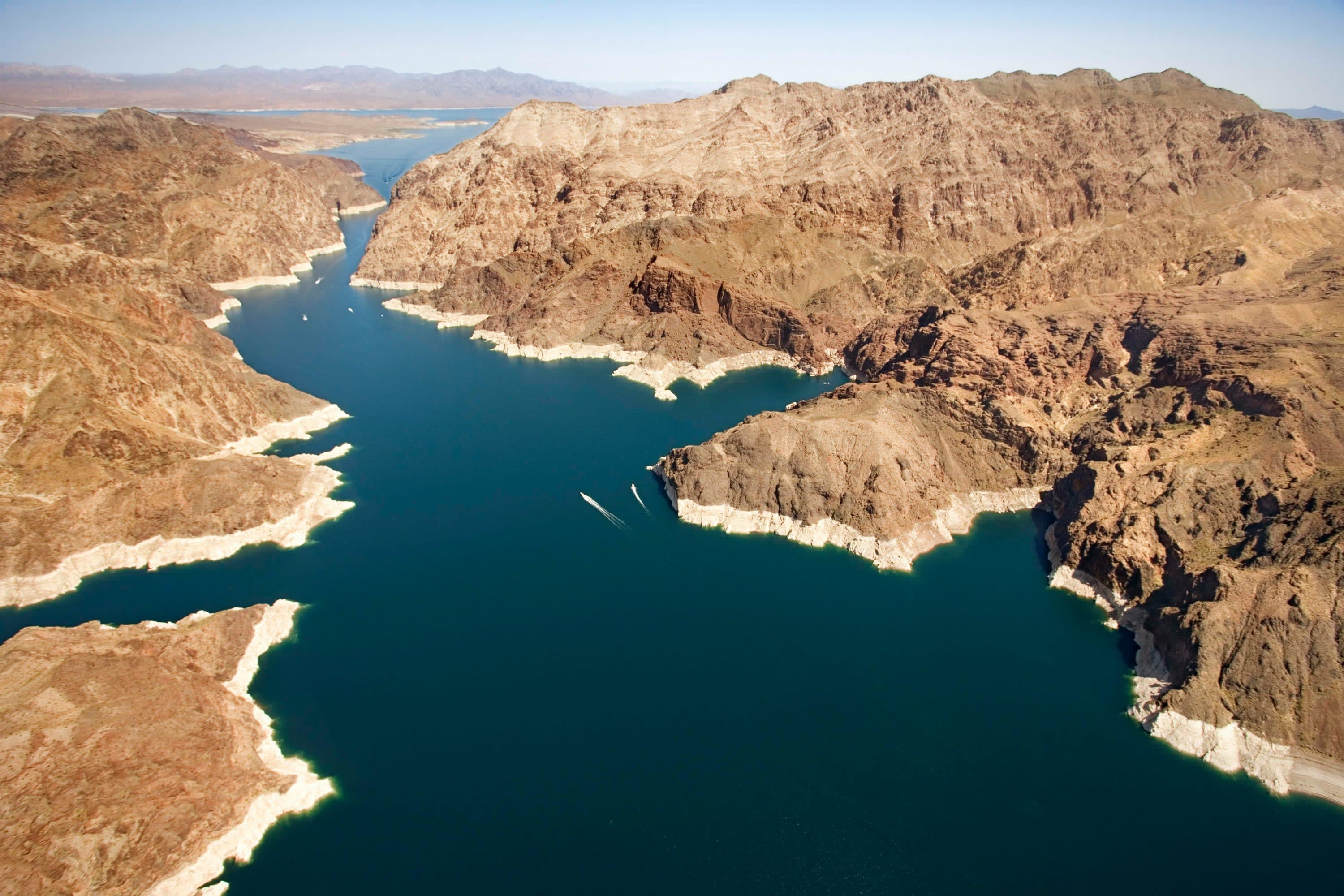
Lake Mead is only slightly further from the Strip, in the other direction from Red Rock Canyon. It’s the largest reservoir in the United States by volume, and its crystal-clear waters and surrounding mountains offer activities like boating, fishing, kayaking and hiking. On foot, you can explore dramatic desert landscapes and rock formations, and secluded coves by water (jet ski and boat rentals are available all year). You can also tour the nearby Hoover Dam, an incredible feat of modern engineering.
Mojave National Preserve (60 miles; 1 hour)
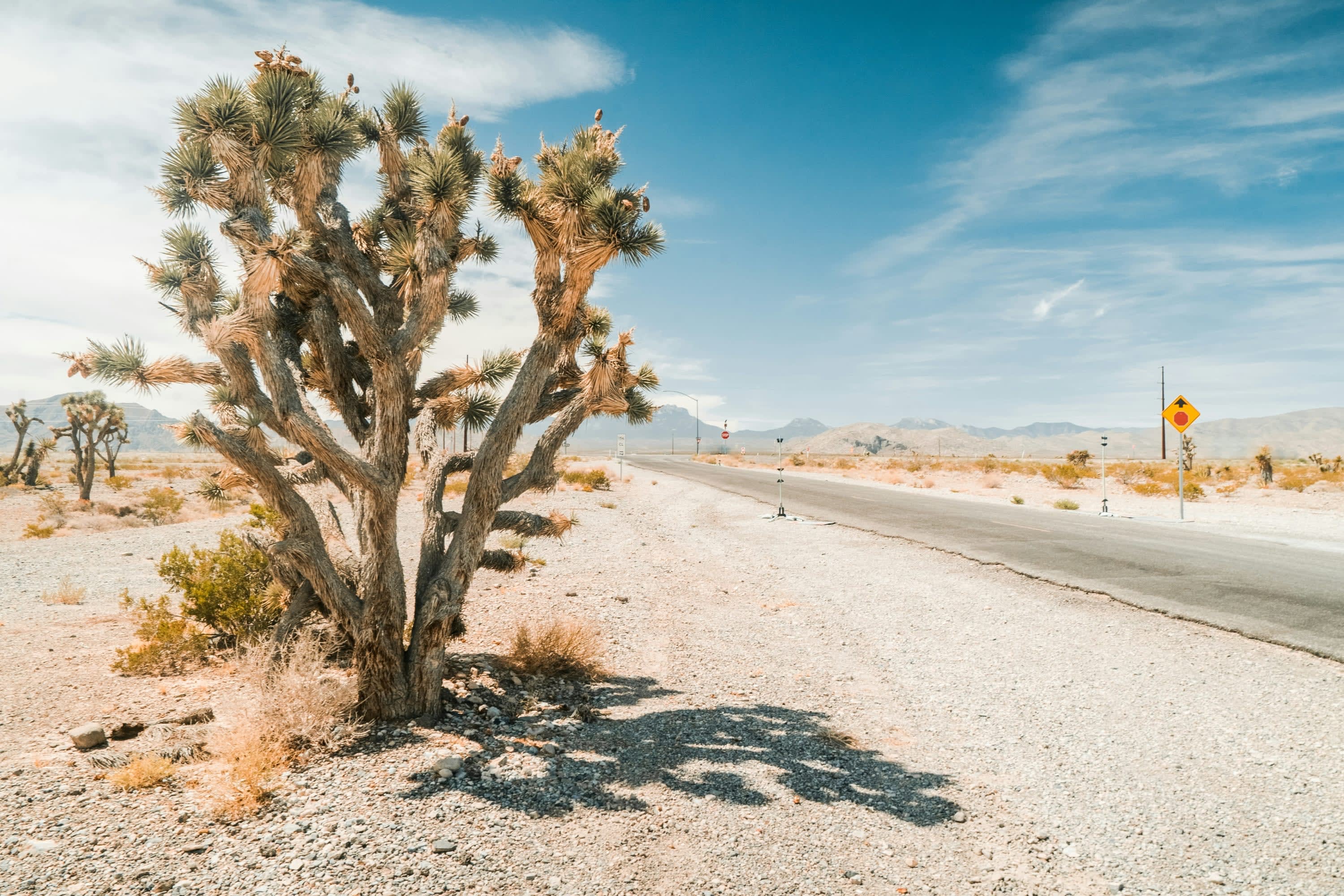
The Mojave is what you imagine when you think of deserts in the Old West: cacti and brush, occasional Spanish ruins, abstract rock formations, jutting mountains. There’s a major entrance about an hour southwest of Las Vegas, making it accessible; however, the preserve covers an area the size of Delaware. Hiking and off-roading are bountiful here, and there are also a handful of archeological sites that spotlight the Native Americans who used to live here.
“I lived in Mojave National Preserve for over a year,” Fora Advisor Carmen Candal said. “It’s definitely quiet and off the beaten path. For a quick trip I’d recommend hitting the visitor center and Kelso Dunes, where you can hike up the dune and slide or run down. But don’t go in the hot months!”
Carmen highlighted the Mitchell Caverns, technically part of Providence Mountains State Recreation Area, within the larger Mojave preserve. There’s a lava tube, and the three-mile Teutonia Peak trail is “great for sunset and expansive desert views.”
Carmen also shared a few pro tips. First, she noted you can see desert tortoises and other wildlife in warmer months (again, be wary of the heat). SUVs with all-wheel drive are ideal (a Fora Advisor can arrange a rental if you don’t have regular access). And be sure to visit the preserve with a full tank of gas. If you’re traveling from Las Vegas, the town of Primm, Nevada is the last major stop with gas stations.
Death Valley National Park, California (100 miles; 2 hours)
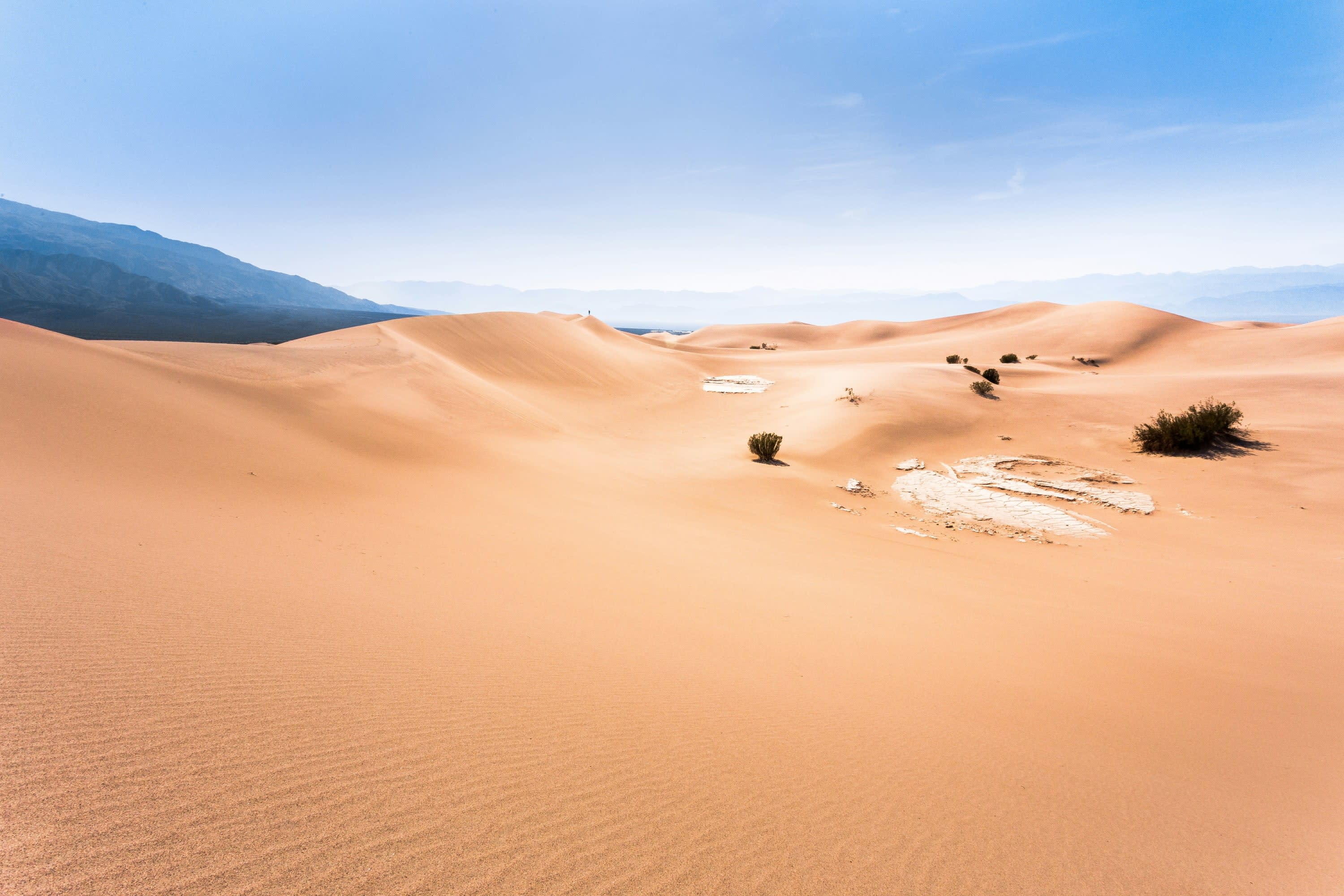
Roughly a two-hour drive west of Las Vegas, Death Valley is a land of extremes and stunning contrasts. From the salt flats of Badwater Basin to the towering sand dunes and colorful Artist's Palette, this park offers landscapes unlike anywhere else on Earth. We strongly advise visiting during cooler months to fully enjoy hiking, stargazing and photography — the temperatures are so extreme in summer that visiting outside of early morning hours is actively discouraged by park rangers. Despite the foreboding name, Death Valley is brimming with life adapted to its harsh conditions. As with Joshua Tree National Park, be sure to drive into the park with a full tank of gas.
Zion National Park, Utah (155 miles; 2:15 hours)
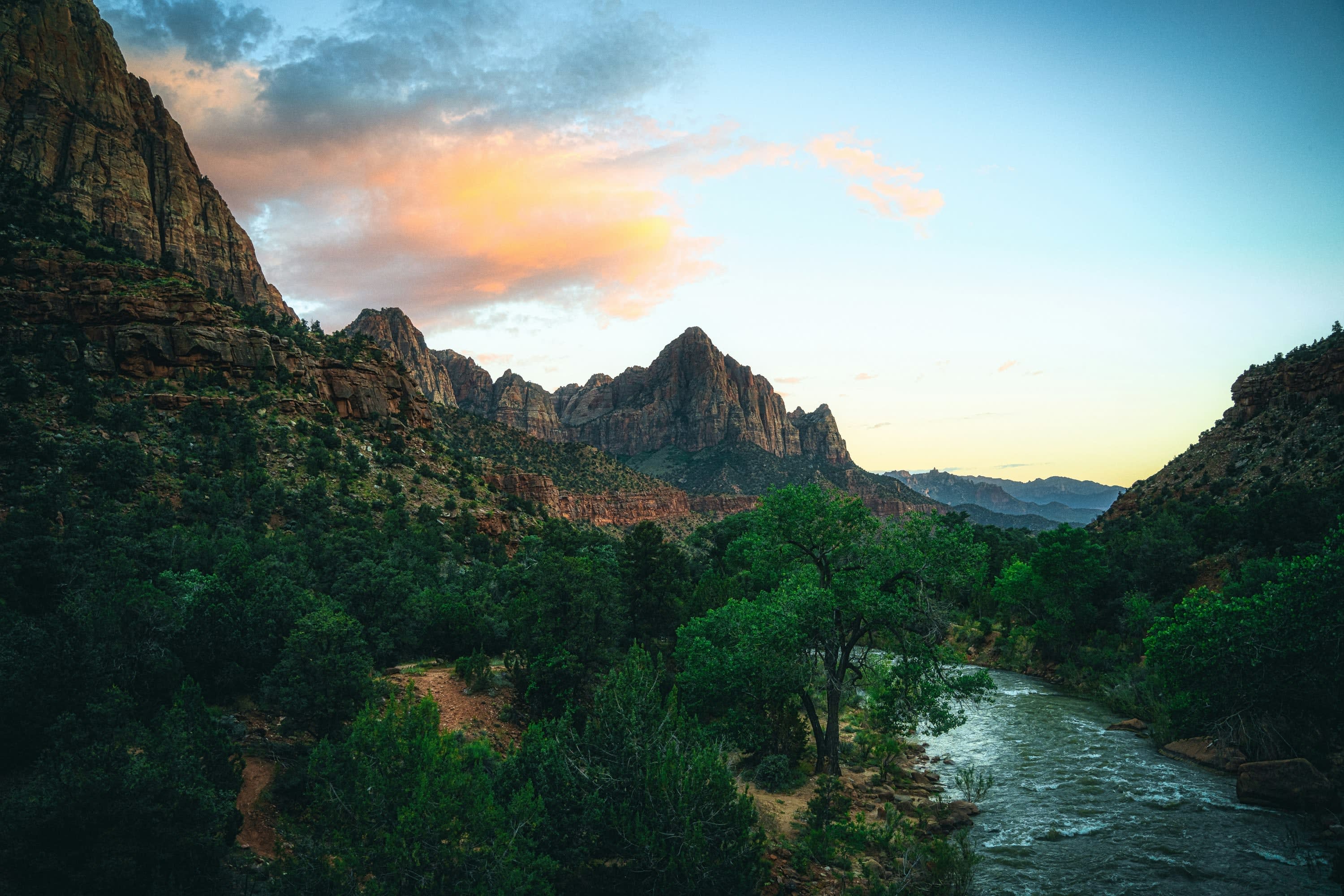
Zion National Park, one of the most fun places to go in Utah, is approximately 2.5 hours northeast of Las Vegas. Known for towering red cliffs, narrow slot canyons and lush valleys, Zion offers unforgettable hikes like Angels Landing and The Narrows. The Virgin River weaves through the park, creating serene vistas amidst dramatic landscapes.
“Stay at the lodge inside the park to get an early start on hikes,” Fora Advisor Jennifer DiDonna recommended. “This will also allow you to take your car into the park and skip the shuttles that everyone staying outside the park will need.”
In the warmer months, make sure to get to the park as early as possible,” Fora Advisor Theresa Baumann said. Her favorite time to go is during fall and winter, when there are fewer crowds and more temperate weather.
Joshua Tree National Park, California (180–220 miles; 3–3:45 hours)

Joshua Tree, one of the best places to visit in California, is between three and four hours southwest of Las Vegas — there are multiple entrances — and showcases the unique intersection of the Mojave and Colorado deserts. The park is famous for its namesake Joshua trees and striking rock formations. It’s a paradise for hikers, rock climbers and, on clear days, stargazers. Occasional oases and desert wildlife add to the allure, and an otherworldly vibe make Joshua Tree a great escape from buzzing Vegas.
“I highly recommend going to Joshua Tree at night for stargazing,” Theresa said. “Be sure to check the weather for a clear night for the best views!”
Grand Canyon National Park, Arizona (closest entry: 280 miles; 4:45 hours)
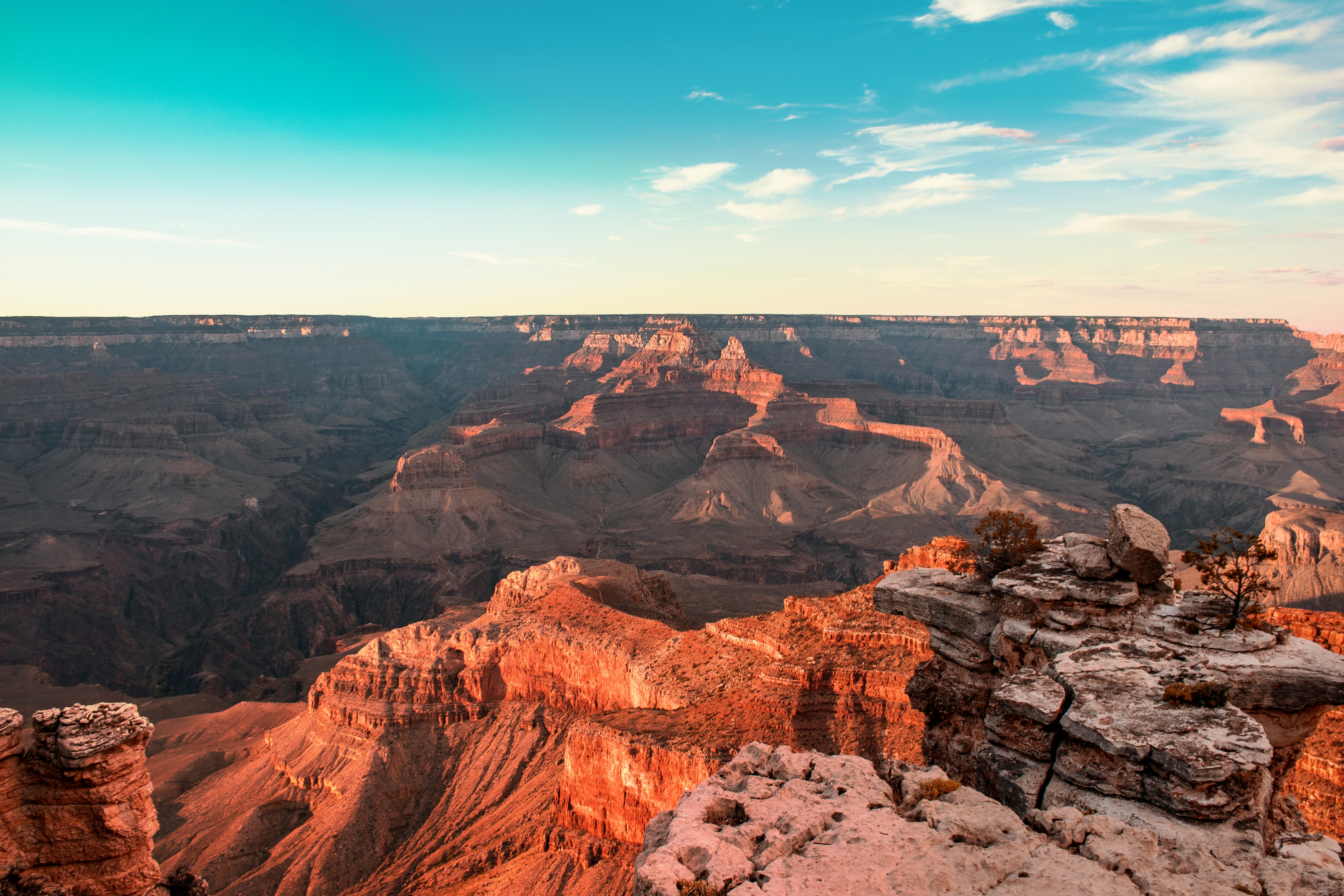
The Grand Canyon needs little introduction; it’s one of the world’s most iconic natural wonders. The colors and immense scale are awe-inspiring at any time of day, but sunrise and sunset are especially magical. The South Rim offers breathtaking views, hiking trails and a range of visitor services. For a quieter, barebones experience, explore the North Rim. It’s notably further from Vegas, but you won’t have to worry about crowds. The canyon is obviously so large that finding a spot without people isn't difficult. You can also venture below the rim for activities like white-water rafting or kayaking. One thing that’s not always in the brochure, though: Grand Canyon National Park is set at an average elevation of 7,000 feet. The air is thinner here, which can pose challenges if you’re not used to high elevations.
Bryce Canyon National Park, Utah (260 miles; 4 hours)

One of the more unique places to stay in Utah, Bryce Canyon is about a four-hour drive northeast of Las Vegas and offers surreal landscapes of crimson hoodoos and natural amphitheaters. These spire-like formations glow in vivid hues at sunrise and sunset.
“Bryce is such a unique park with the largest concentrations of hoodoos. It makes you feel like you're in a Star Wars movie,” Theresa said. “My favorite hikes are the Peekaboo Loop, which is a challenging 5.5-mile hike — the views are amazing — Queen's Garden Trail and the Navajo Loop.”
In winter, snow adds a magical touch to the already impressive scenery, but Theresa noted that you’ll avoid crowds and bad weather if you visit in March or early November.
Great Basin National Park, Nevada (290 miles; 4:30 hours)
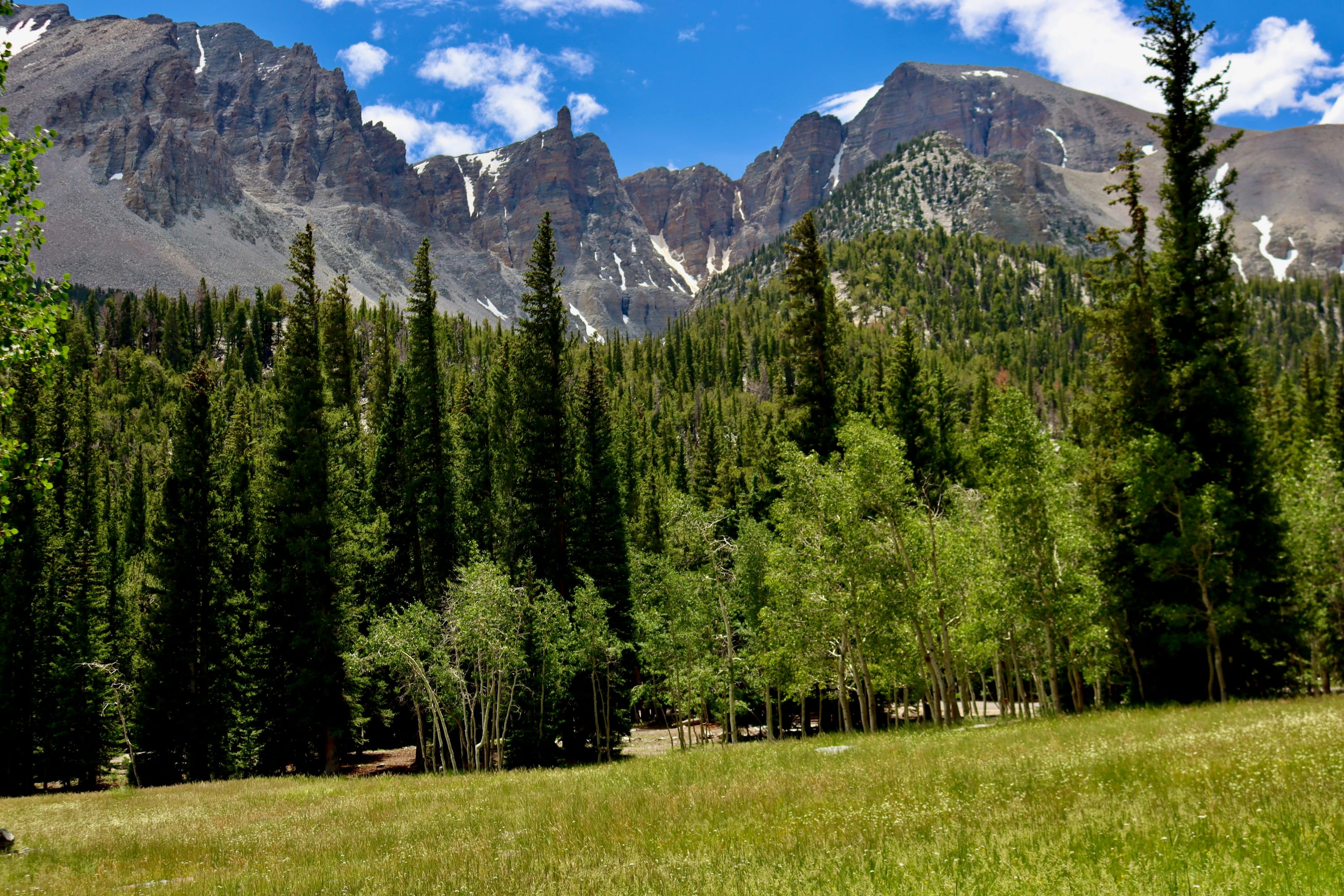
Situated roughly 4.5 hours north of Las Vegas, Great Basin National Park offers alpine scenery surrounded by desert. The park features ancient bristlecone pines, the Lehman Caves — deep caves you can tour with park rangers — and the stunning Wheeler Peak, which offers equally beautiful vistas. The park’s remote location also makes it great for stargazing, and its peaceful atmosphere provides a contrast with the energy of Vegas.
Capitol Reef National Park, Utah (330 miles; 5 hours)

Capitol Reef is approximately five hours northeast of Las Vegas. It is a treasure trove of colorful cliffs, rugged canyons and historic orchards. The Waterpocket Fold, a 100-mile geological monocline, is a highlight. You can hike, drive scenic routes or explore pioneer history at the Fruita Historic District. Fun fact: the park gets its name from a combination of dome-shaped sandstone formations that resemble the US Capitol Building, and old settlers who referred to great natural barriers as “reefs.”
More US travel inspiration
Check out more destinations across the United States:
